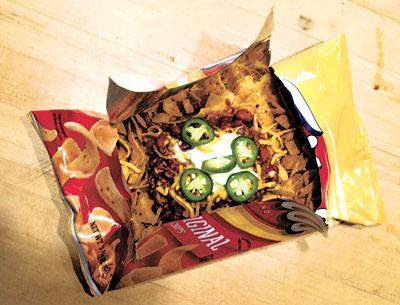Seasons by the Sea: Hearty Fare for Winter
Seasons by the Sea: Hearty Fare for Winter

You know how when you order food in a restaurant and you wait and wait and wait and it’s been like 45 minutes, so then you get up to use the loo and lo and behold, your food arrives at the table? That’s what this column is about. Eastern European food. The hearty, heavy, frigid-weather cuisine that keeps the Georgians and Hungarians and their neighbors fortified during long miserable winters. Because if I write about this, it is a guarantee that the icicles will be melting, perhaps some mountain snowdrops will pop out of the ground, and at least the potholes will begin blooming all over the East End.
Most of us think of Eastern European food as a lot of beets and potatoes and vodka, and that would be accurate. But there is also the lighter and brighter traditional dishes of coastal Croatia influenced by Italy, such as squid ink risotto, grilled fish with chard, garlic, parsley, and olive oil, and brudet, a tomatoey fish stew served over polenta. Even truffles grow in Istria!
One of my grandparents’ dearest friends was a Russian fellow named Vladimir Orloff. He taught them how to make tefteli, a rich meatball dish smothered in sour cream sauce. Our mother made it frequently, and we called it Vladimir’s meatballs. It gave all three of us kids indigestion every time. So some Eastern European dishes are indeed heavy and dense.
The diet of root vegetables, cheap meats, and dairy products was born out of necessity, climate, and poverty. Presumably the vodka is used to cut through the saturated fat and drown misery. If any vegetarians or gluten-intolerant people live in Poland or the other Slavic countries they may be hard pressed to find adequate food. Noodles and breads are prominent, as are pork, chicken, and beef.
Lithuanian cuisine shares similarities with that of Poland, Scandinavian countries, Hungary, and Romania. Potatoes, mushrooms, beets, cabbage, radishes, and cucumbers are grown and are popular, as are apples, plums, pears, cranberries, and lingonberries. And in spite of the richness of the diet — with such dishes as blynai (similar to blinis), kibinai (pastry with mutton), didzkukuliai (potato dumplings), desra (pork sausage), and spurgos (doughnuts) — obesity is very low in Lithuania.
Many Russian dishes may sound more familiar to us. There is the cabbage soup called shchi, meat kebabs called shashlyk, pirozhki, similar to pirogies, pastries stuffed with meat and onions, or rice, eggs, and dill, or mashed potatoes with green onions. Blinis, the thin little pancakes often made with buckwheat flour, are a treat topped with melted butter, sour cream, and caviar, or fruit jam. Olivier, or Russian salad, is delicious when made with fresh ingredients and homemade mayonnaise. It is a combination of finely diced boiled potatoes, hardboiled eggs, peas, and carrots bound with mayonnaise. Vodka is the best known beverage out of Russia, made with grains or most often with potatoes.
The foods of Croatia sound like the healthiest and most diverse to me, combining the influences of Greece, Italy, Turkey, and France. One traditional dish is called ispod peke, actually more of the method of cooking than the dish itself. Lamb, octopus, or veal are paired with seasoned potatoes and cooked in a stone oven under a heavy cover. Hot coals are piled on top and food cooks slowly. According to Travel Adriatics website, “you are awarded with a tender rhapsody of flavors.” Crni rizot, literally “black risotto,” is a Dalmatian dish similar to Italy’s cuttlefish risotto, however the Croatians top theirs with grated cheese, a no-no in Italy. Homemade pastas and polenta are topped with truffles grown in Istria and foraged by trained dogs.
As we eagerly wait for the snow to melt and spring to arrive, we could indulge in some Eastern European-inspired cooking. How about some Long Island potatoes with Long Island’s own LIV vodka? And as things turn green and promising, break out the grill and cook some fish with herbs and chard on the side, a la Croatia.
Click for recipes




